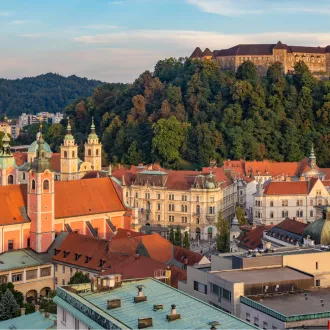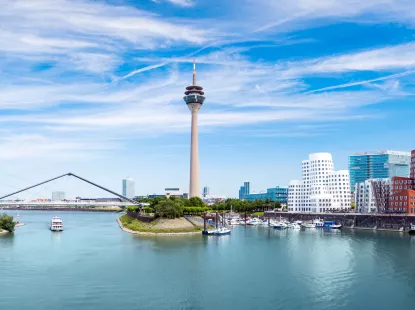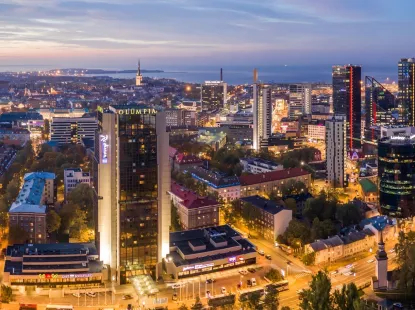

Romania
About the EURES Member
At the end of September 2016, vacancies reported by employers were for the following jobs: unskilled workers in the ready-made garment industry; retail workers; unskilled assembly line and component-fitting workers; freight handlers; shop assistants; unskilled workers for building demolition, wall linings, mosaic, wall and floor tiling, parquetry; unskilled workers for packing solid and semi-solid products; lorry/large tonnage vehicle drivers; textile sewing operators; cleaners. (Source: National Employment Agency (ANOFM), September 2016).
Text last edited on: 03/2017
The top 10 professions ranked by the number of unemployed people as at the end of September 2016 are as follows: unskilled agricultural workers; unskilled workers for packing solid and semi-solid products; unskilled agricultural workers; unskilled workers for building demolition, wall linings, mosaic, wall and floor tiling, parquetry; unskilled workers for road, highway, bridge and dam maintenance; locksmiths; loaders/unloaders; freight handlers; retail workers; unskilled workers in the ready-made garment industry; shop assistants. (Source: National Employment Agency (ANOFM), September 2016).
Text last edited on: 03/2017
According to data provided by the National Institute of Statistics, Romania has 19.9 million inhabitants.
According to the Labour Ledger as at 1 January 2016, the active civilianpopulation stood at 8 776 800, representing 44.4 % of the country’s total population. Out of the total active population, 54.1 % were men and 45.9 % were women.
The employed civilian population stood at 8 340 600, of whom 5 041 100 were salaried employees. Most of the employees were working in the services sector (3 100 200 people), while 1 821 800 persons were employed in the industrial and construction sectors. The number of employees in agriculture, forestry and fisheries was 119 100. In the second quarter of 2016, the employment rate of the working age population (15-64 years old) was 61.8 %, with a higher rate for men (70.0 %, compared to 53.4 % for women).
Two different sets of data concerning the unemployment rate are calculated in Romania. The ILO unemployment rate is calculated by the National Institute of Statistics (INS) using the definition provided by the International Labour Organization. In August 2016, this rate was 6.0 %, according to the INS press release of September 2016.
The rate of registered unemployment, determined by the National Employment Agency (ANOFM), is calculated on the basis of the number of unemployed people registered in the ANOFM database. At the end of May 2016, this rate was 4.08 %, corresponding to 410 500 registered unemployed persons.
Romania is divided into eight administrative regions: North-West, Centre, North-East, South-East, South-Muntenia, Bucharest-Ilfov, South-West Oltenia and West. Each of these has certain specific features in respect of their economic structure, which is why certain sectors play a predominant role in the development of each region. In the North-East and South-West regions, a large share of the population is engaged in agricultural activities. The civilian population is employed mainly in industry and the construction sector in the West and Centre regions, and in the services sector in the Centre, West and Bucharest-Ilfov regions.
There are also several areas which have significant tourism potential (Bucovina in the North-East region, the Black Sea coast and the Danube Delta in the South-East region, etc.), and the economic development of these areas is influenced also by the use of this potential.
At the end of May 2016, the highest rates of registered unemployment were recorded in the South-West region (6.4 %) and the South-Muntenia region (5.5 %). The lowest rates of registered unemployment were recorded in Bucharest (1.6 %) and the West region (2.9 %).
The main types of enterprise present on the labour market are companies (limited liability companies (SRL), joint-stock companies (SA), partnerships (SNC), simple partnerships (SCS), joint-stock partnerships (SCA)), sole traders (PFA) and family associations).
The main categories of employers are multinational companies, profit/non-profit state-owned companies, private companies and NGOs. According to the 2016 Coface CEE Top 500 Companies study, the largest companies in Romania in terms of turnover are: Automobile Dacia SA, OMV Petrom Marketing SRL, OMV Petrom SA, Rompetrol Rafinare SA, Kaufland România, Rompetrol Downstream SRL, British American Tobacco Trading SRL, Lukoil Romania SRL, Carrefour România SA, EON Energie România SA, and Transgaz SA.
The main types of employment contract are contracts which may be fixed-term or permanent, with full-time or part-time working hours. Certain jobs require specific qualifications and/or experience. For further details, see chapter 3.3 of 'Living and Working in Romania'.
Sources: National Employment Agency, Ministry of Labour, Family, Social Protection and the Elderly, National Institute of Statistics.
Text last edited on: 03/2017
Top 10 of the most required occupations in Romania
1. Manufacturing labourers not elsewhere classified (ISCO 9329)
2. Freight handlers (ISCO 9333)
3. Shop keepers (ISCO 5221)
4. Shop sales assistants (ISCO 5223)
5. Building construction labourers (ISCO 9313)
6. Structural-metal preparers and erectors (ISCO 7214)
7. Heavy truck and lorry drivers (ISCO 8332)
8. Car, taxi and van drivers (ISCO 8322)
9. Security guards (ISCO 5414)
10. Stock clerks (ISCO 4321)










